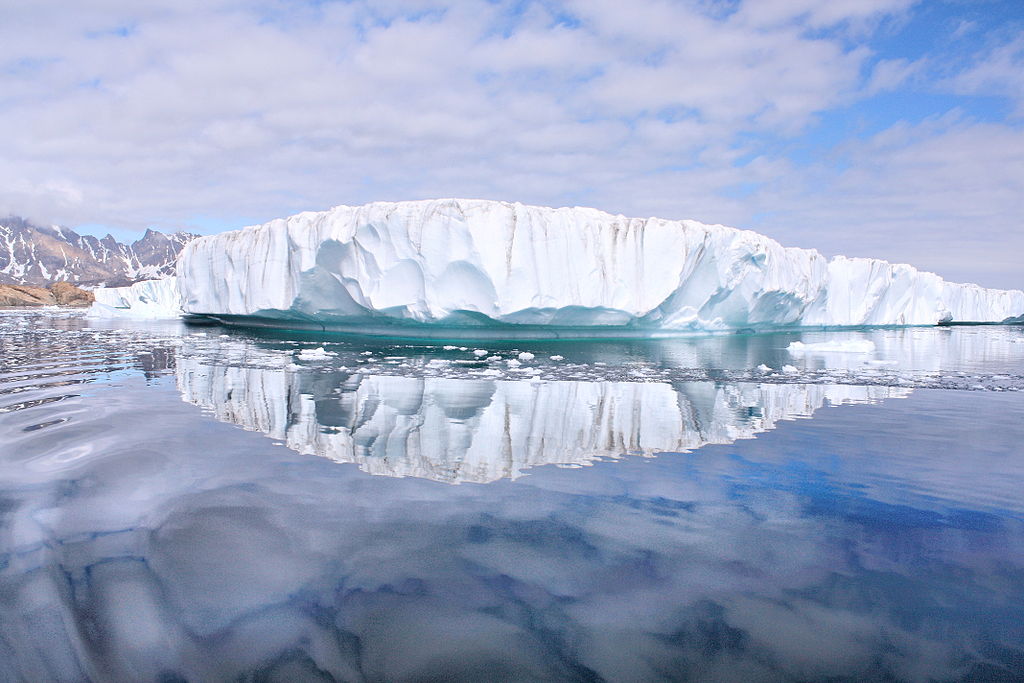
Rock weathering may provide clues to long-term stability of the planet’s ice sheet
Tasiilaq, Greenland, home to the world’s second largest ice sheet. (Photo by Christine Zenino, Chicago, CC BY 2.0, via Wikimedia Commons)
Studying how rock weathering in Greenland changed as the ice sheet grew may answer questions about the ice’s long-term stability and the global carbon cycle, according to a University of Florida geology professor.
“In order to understand what the climate’s going to be like in the future, we need to understand more about what it was like in the past,” said Ellen E. Martin, professor of geology who spoke at CASW’s New Horizons in Science, part of the ScienceWriters2013 meeting in Gainesville, FL.
Rock weathering and the carbon cycle
Martin and a team of seven researchers spent last summer in western Greenland studying rock weathering produced by glacial movement and glacial runoff. They studied rock weathering partly to gain insight into carbon cycle that determines the planet’s carbon dioxide levels.
“It’s a nice area to work in because it has a wide range of deglaciated regions—we had a whole range of environments to work with,” Martin said.
She noted it was a good choice because there are no polar bears in the region.
Rock weathering may also help Martin develop a tool to study the extent of Greenland’s past ice sheet. By defining how much weathering has happened in the past, she might be able to interpret the weathering patterns seen today. She may also be able to determine the ice sheet’s stability.
“What we’d really like to be able to do is put together a technique that we can apply further back in time, so that we can look and see how these ice sheets have changed in time,” she said.
Reading the isotopic signal
Martin said her team studies the difference between the isotopic composition of water and sediment because that signature reveals how much weathering has happened. She believes there is less weathering in proglacial samples, which are samples collected near the ice sheet, than in deglacial samples, which are taken further down the proglacial river.
“We’re looking at a chemical weathering signature that is created by having the land exposed, versus a chemical signature that you get when ice is covering the land,” she said.
In an effort to study these isotopic signatures, Martin’s group collected 140 water samples and 170 sediment samples over two months. The team found that the proglacial samples did not display a lot of chemical weathering.
The deglacial samples are still being examined. Martin believes these samples will indicate intense weathering because they show contamination from burned leaded gasoline, which in geological terms is an extremely recent phenomenon.
Covered in ice
But more of Greenland’s past rests beneath its ice sheet, where Martin said it’s difficult to get to. Since she cannot get past the ice on land to look at those records, Martin said the data will have to come from the ocean. Ships that can drill ocean cores will be needed, she said.
“The big picture is that Greenland is melting, and it’s going to start melting faster and faster as it starts to melt,” Martin said. “So what we need to do is whatever we can to help mitigate climate change.”
Though it would take tens of thousands of years for all the world’s ice sheets to melt completely from carbon dioxide emissions, Martin said people shouldn’t wait to get involved in reducing Greenland’s melting glaciers today.
“It’s not going to happen in any of our lifetimes or grandchildren’s,” Martin said. “But if you start the process now, it may never stop.”